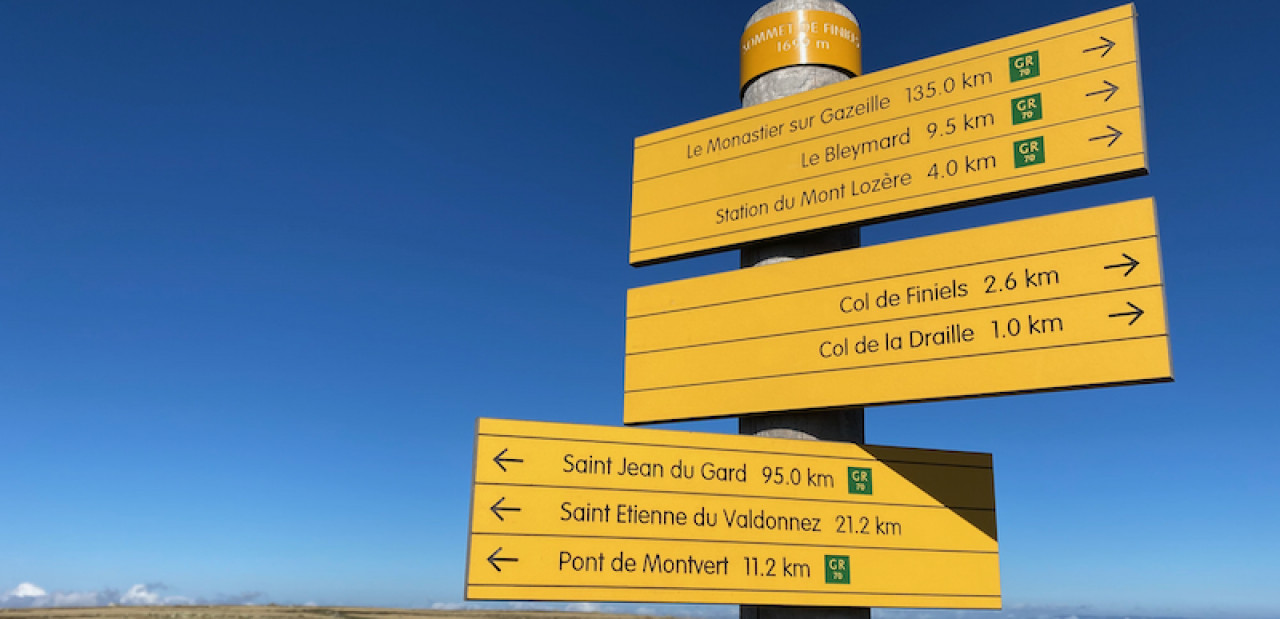
"Take a hike, mate!" Often said in jest to close a subject, but if you really do want to 'take a hike' then you need to do a GR. These long distance hiking routes cross-cross Europe and offer some of the most stunning walking in the world. They are to be found across Europe, but especially in France, Belgium, the Netherlands and Spain.
The GR's go by various names depending on the country. In France they are a Grande Randonnée, in Spanish Gran Recorrido, in Portuguese Grande Rota and Grote Routepaden in Dutch. Very convenient that the initials 'GR' cross international boundaries, and can still translate as meaning a great or long hike.
The trails in France alone cover approximately 60,000 kilometres (37,000 mi), and across Europe there are more than 100 routes. Trails are blazed with the instantly recognisable white stripe above a red stripe, on trees, rocks, signs or whatever is handy. In misty or snowy conditions the emergence through the gloom of the red and white flashes is instantly reassuring.
All the GR trails are maintained by the local country’s official federation, their members are the ones who update the trails and check the routes annually, and if necessary change the red and white flashes to take in a necessary diversion, perhaps due to a landslide or rockfall. There are idiosyncrasies in the marking system, for example on the GR7 in Andalucia you may struggle to find the markers, while on the GR5 in the French Alps, Lake Geneva to Nice, there might be so much paint that you wonder if someone tripped and spilt the paint pot or was just on a mission to get home early for Netflix.
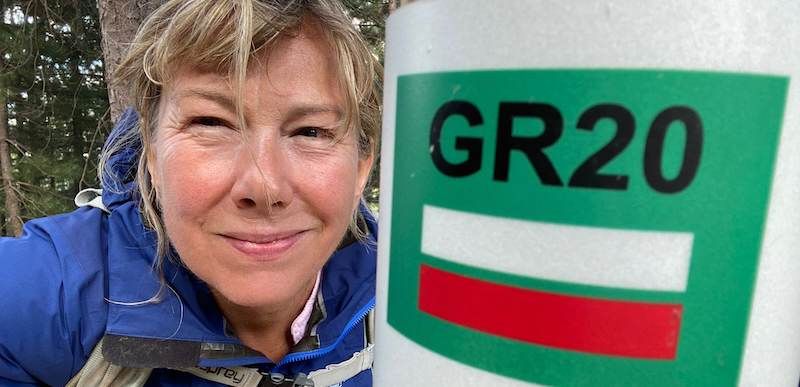

Not lost yet, then! Always happy to know I am on the correct trail
Those passionate about long distance journeys will at some point or another focus on the GR's. Many are steeped in history, culture, folklore and provide passage through the most stunning of scenery. For dedicated hikers the GR's are a magnet that is hard to resist. Months can be spent in the planning before actually hitting the trails.
Just booking the accommodation that might be required for these trips can range from one week of overnights to several months, depending on the route tackled and the time available. Some will tackle the routes like a terrier with a bone, biting of a small chunk every so often, but always coming back for another taste with the aim of finishing the meal whatever the obstacles.
For some hikers it can become a life long obsession to complete a route step by step and in its entirety, no cheating with a cable car ride for the dedicated GR fanatics.
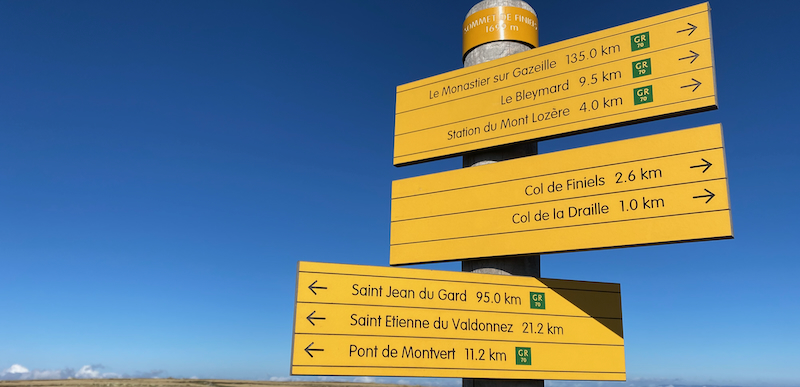
Various GR's to choose from in the Cévennes, France
Then there are those who complete long distance routes as a pilgrimage. Perhaps the most famous in Europe are the trails which form the Santiago de Compostella, the GR65. There are no less than 5,500 km (3,437 mi) of way marked trails leading to Santiago de Compostela in northwestern Spain.
In France, four symbolic routes link up with the holy finishing point in Spain. Their starting points are the great sanctuaries of Saint-Martin de Tours, the Madeleine de Vézelay, Notre-Dame du Puy and Saint-Gilles du Gard. These four routes then meet at the Spanish border to form a single path to Santiago de Compostela.
My own experience of being on various stages of the route over the years is that from the point the paths converge, understandably, those making the pilgrimage are considerably more in evidence. Usually rucksacks will be adorned with a scallop shell, and often they will scorn high tech walking poles for a wooden staff. The scallop shell has long been the symbol for the Camino de Santiago, and is believed to promote courage, strength and hope. It is also said the remains of St James were covered in these symbolic shells.
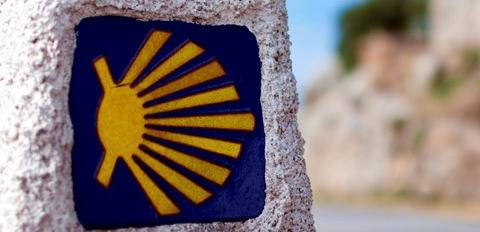
The Scallop shell symbol of pilgrimage on the GR65
The Camino de Santiago as this network of trails is also known is often referred to as the Way of St James. The legend holds that St. James's remains were carried by boat from Jerusalem to northern Spain, where he was buried in what is now the city of Santiago de Compostela. The route was an important Christian pilgrimage in the Middle Ages with pilgrims walking the route in order to reduce the punishment of their sins.
In France, four symbolic routes link up with the holy finishing point in Spain. Their starting points are the great sanctuaries of Saint-Martin de Tours, the Madeleine de Vézelay, Notre-Dame du Puy and Saint-Gilles du Gard. These four routes then meet at the Spanish border to form a single path to Compostela.
There are iconic GR's that are on many bucket lists that are easily accessible, and can be enjoyed by hikers of various fitness and skill levels, and there are GR's which are on bucket lists in the hope that one day the courage will be found to tackle them!
The GR TMB, the Tour du Mont Blanc is one of the most frequented, accessible and well known. This is a 215 km (134 mi) circuit round the Mont Blanc Massif passing through France, Italy and Switzerland. This historic hike traces the footsteps of the geologist Saussure who in the mid-1700's made several circuits round the mountain range while searching for a route to the summit of Mont Blanc.
If you fancy a really long hike, then try the GR5 for size. It stretches all the way from the North Sea to the Mediterranean, and traverses the entirety of the French Alps from Lake Geneva to Nice. It is often regarded as the premier long distance hiking trail of Western Europe. The GR5 is about 2,500 km (1,562 mi) and takes around three and a half months to walk. It is laid out to traverse along, or to cross as many mountain ridges and highlands as possible and it does!
Historic hikes that became famous include the GR70. This is thanks to Scottish author, Robert Louis Stephenson, putting pen to paper to describe his travels with a donkey in the 1700's, the book has the unembellished title of Travels with a Donkey in the Cévennes. I enjoyed reading it recently while completing this GR, and it provided a fascinating insight into 'hiking' in the 1700's. Many regard it the earliest travelogue to be published.
Lesser known hikes can be neglected in favour of the more famous routes, and we have found that getting off the beaten track can offer some great GR's. The Spanish island of Mallorca offers the GR221, the gorgeous Serra de Tramuntana. It is a truly beautiful route through a UNESCO World Heritage Site. Imagine wild limestone mountains rising up above a jade green sea, with pine trees sculpting the horizons. Quaint little villages, fruit orchards, olive groves, and farmers working in the fields as you stroll along the trail pretty much sums up this experience.
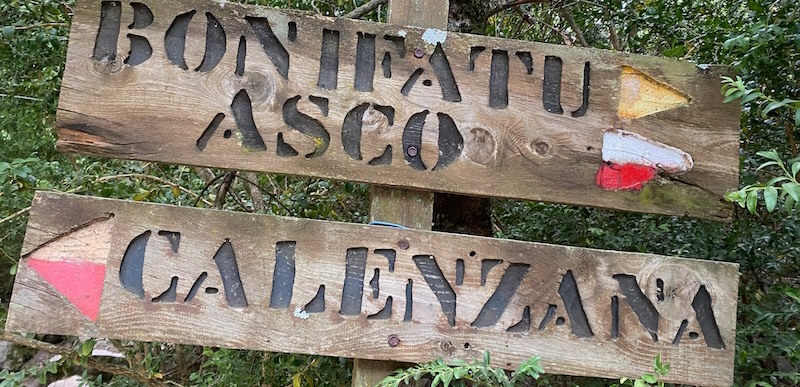
Starting out on the fabulous GR20 in Corsica
Then there is the infamous, and in my humble opinion one of the best, the big, and bad GR20 in Corsica. If you want a once in a lifetime experience of a truly great trek then we cannot recommend the GR20 highly enough. To be found on the French island of Corsica in the Mediterranean this is a stunning two week odyssey along the spine of Corsica for fit hikers who like a challenge.
The terrain is spectacular along the GR20, and mostly every day at some point you will be using your hands to scramble as well as your feet. The days are long, and the climbs are challenging, but it doesn't stop thousands successfully completing this route every year. To help you tackle the terrain and climate we have produced the insider's guide to a kit list for the GR20.
In my mind the French word sauvage meaning 'wild', sums up this island. The cows, horses, pigs and whatever else you find wandering free-range in the mountains seem a touch sauvage, and dare I say it so do the local inhabitants, but in a very independent and good way. Let's just say they do not lack attitude and you will find that if you can speak French it will go a long way towards endearing you to them.
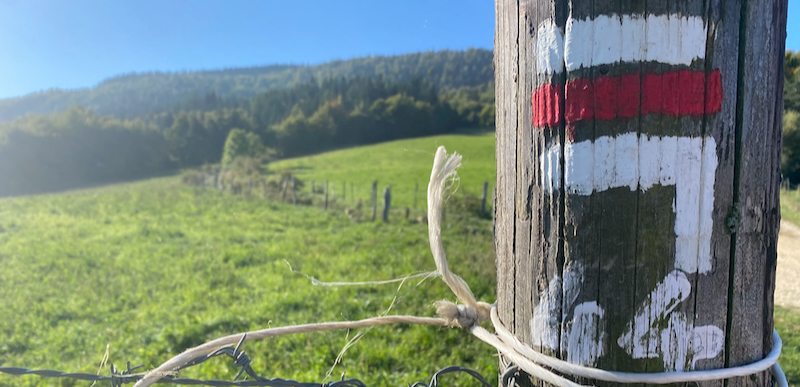
GR markings on a fence post, indicating a left turn!
Make 2023 the year you head for the hills and tackle the GR of your dreams. Tracks and Trails offers a variety of fully guided long distance hiking routes, and are always happy to talk you through any questions or queries about our trips.
For more information about hiking with Tracks and Trails, speak to one of our expert team by calling +44 (0)20 8144 6442 or emailing This email address is being protected from spambots. You need JavaScript enabled to view it.
